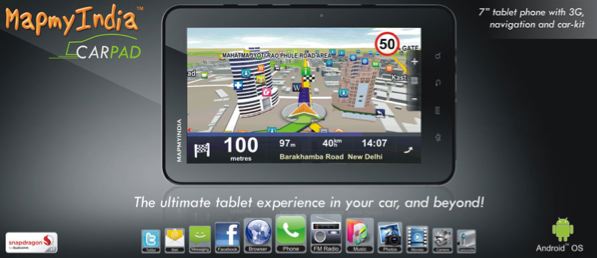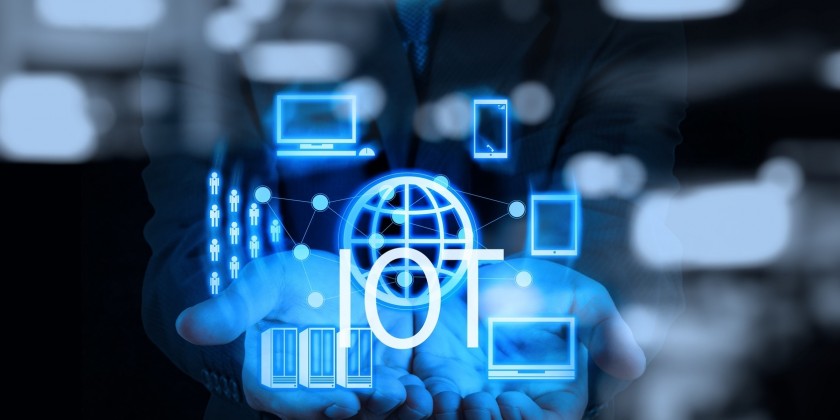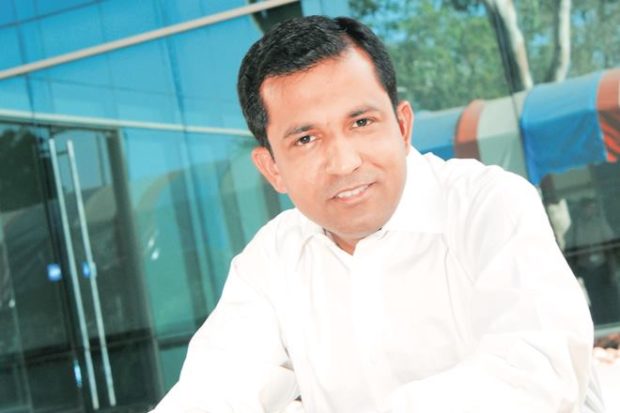
Login Into Your Account

Reset Password
Law enforcement Technology,Law enforcement Agency,Policing Technology,Smart Policing India,Homeland Security India,Border Security India,Border Management India,Cyber Crime news,Cyber Security news,Safety App,Public Safety App,Security App,Women Safety App,Police Initiative,Surveillance news,National Security news,isc event 2016,isc event 2017,scada event 2016,scada event 2017,Critical infrastructure security event 2016,Critical infrastructure security event 2017,iot summit 2016,iot summit 2017,Internet of things seminar 2016,Internet of things seminar 2017,iot seminar delhi 2016,iot seminar delhi 2017,iot conference delhi 2016,iot conference delhi 2017,top security event,security event,security event 2016,security event 2017,security conference 2016,security conference 2017,cso summit 2016,cso summit 2017,Corporate security event,Corporate security conference,security research india,homeland security research india,security think tank india
Law enforcement Technology,Law enforcement Agency,Policing Technology,Smart Policing India,Homeland Security India,Border Security India,Border Management India,Cyber Crime news,Cyber Security news,Safety App,Public Safety App,Security App,Women Safety App,Police Initiative,Surveillance news,National Security news,isc event 2016,isc event 2017,scada event 2016,scada event 2017,Critical infrastructure security event 2016,Critical infrastructure security event 2017,iot summit 2016,iot summit 2017,Internet of things seminar 2016,Internet of things seminar 2017,iot seminar delhi 2016,iot seminar delhi 2017,iot conference delhi 2016,iot conference delhi 2017,top security event,security event,security event 2016,security event 2017,security conference 2016,security conference 2017,cso summit 2016,cso summit 2017,Corporate security event,Corporate security conference,security research india,homeland security research india,security think tank india

IoT in Logistics is crucial to Digital India
Few leading Indian companies, including Hindustan Coca-Cola Beverages Pvt. Ltd., Ultratech Cement, Jindal Steel & Power, Varuna, Essel Mining (Aditya Birla Group), Flipkart, HDFC Ergo, Jindal Saw, JSW Steel Ltd, Lupin, Reliance Industries Ltd., Philip India, Vadilal Industries Ltd, VRL Logistics, Parag Milk Foods, Box 8, Bharathi Cement, Asian Paints, Writer Corporation, Akzo Nobel, have adopted smart IT solutions in the logistic sector.
Stressing on how emerging technologies like mobile, cloud computing, Big Data and IoT are transforming logistics and supply chain services worldwide and how a strong logistics sector is a pre-requisite for the success of the Indian Government’s Make-in-India initiative and technology adoption in the sector is at the core for bringing transformation in logistics, Hiten Varia, Chairman, Novire Technologies said “Manufacturing companies are moving into “Smart factory” models (industry 4.0), which leads to manufacturing and warehouse units that rely more and more on the work done by machines. These machines plug into IoT networks to communicate with each other, and in the process allow us to access all aspects of the manufacturing/logistics chains.”
Logistics 4.0 is the new paradigm of human-machine interaction in logistics that is being implemented by manufacturers to support their industry 4.0 trends. He further added that logistics services will need to be able to communicate with the increasing number of automated processes at factories and warehouses to provide an ever increasing seamlessness in the transition of the product/service from the manufactures silos to the customers’ doorstep.
Technology fuelling business innovation
Some of the early adopters of Logistics 4.0, have relooked at their end to end processes and also adopted Novire-Auto plant’s end to end to plug the gaps in logistics and supply chain. V.V. Benugopal - CEO Panther Transfreight Limited (part of JSPL Group) and Ittaya Sirivasukarn – CEO OF INSEE Digital Company Ltd (Part of Siam City Cement Group, Thailand) had partnered with Novire-Autoplant to implement their E2E Solution. Companies like Akzo Nobel have eliminated bottlenecks and optimized processes by implementing mobile technology in supply chain.
NewsletterA A

Telecom firms can leverage Internet of Things to gain an edge
New wide area network technologies are gaining momentum. Compared to 3G/4G or Wi-Fi, these technologies have much lower power consumption but are also very slow in speed.
The speeds may seem low, but they are sufficient for IoT devices and the technologies offer battery life of several months versus days.
While these new protocols such as LoRa (low range radio) are gaining momentum, there is another school of thought that Wi-Fi is much cheaper and the unit economics are already there.
The chip industry is in a chicken-and-egg phenomenon. Unless you have the volumes, you won’t have the price advantage and unless you have the price advantage, you won’t have the pricing right (for volumes to happen). This is once again a battle of standards, and time will tell which one succeeds.
I was speaking to Rohit Nalwade, CEO of Keeptrak, a leading IoT company in India. They work with several telecom companies. He said something very important. According to him, while all telecom companies sell SIM cards, a few of them are more IoT friendly than others. For example, some telecom companies offer full-fledged APIs (application programming interfaces) to get device data. Some even offer a site where the IoT company can go, see the status of the SIMs, remotely activate and deactivate them and also integrate with their billing applications.
This, he said, is key, as IoT companies will have millions of devices in the field and having a good way to manage the SIMs would be a big advantage.
IoT is a business opportunity for telecom companies. However, there are also many opportunities for telecom companies to leverage IoT as a business advantage.
For example, telecom companies that have deployed a large number of cell towers can use IoT to monitor them remotely and also do preventive maintenance. The solutions can predict failures and they can fix them before a breakdown.
Consider the case of LimeMicro, which makes a mobile base station that is completely software-defined. Instead of all the intelligence in the hardware, they use Software Defined Radio (SDR). With SDR, migrating from 3G to 4G to 5G is just an app. Adding new protocols like LoRa or setting up a Wi-Fi hotspot are all just apps that you add to the mobile base station.
This is critical in an agile environment, where customers demand a lot of new services from their service providers and they are expected to provide the same immediately. The shorter the deployment time for service providers, the faster the investments start generating revenues.
Another area where lots of interesting companies are coming along is setting up temporary mobile base stations. These can be deployed in areas where coverage may otherwise be a challenge—large exhibition halls, for instance. These can also be deployed to test coverage in an area before investing in the capex to deploy a permanent base station.
Telecom companies can also offer cloud services for the IoT devices to connect to. Since the user is already on their network, if the device is sending the data to their own data centre, it is going to be a lot faster experience and easier for the customer as well.
The customer premises equipment (CPE) are also getting smarter. They no longer need to be a plain vanilla Wi-Fi router; they can act as local cloud storage and offer IoT gateway services as well. Data can be backed up to the local cloud storage and the equipment can back up the data to the cloud when the network is free at night.
The business of the telecom companies can be highly commoditized. If they only focus on providing connectivity, they can easily be replaced by someone who is offering the same service cheaper.
One way for them to mitigate this risk is by offering bundled services and devices. This ensures that the service provider is deeply entrenched into the customer business and displacing them becomes more difficult.
For instance, telcos are already bundling handsets and MiFi (brand name to describe a wireless router that acts as mobile Wi-Fi hotspot) and some are already going to bundle various IoT devices.
If the service provider can provide end-to-end IoT services right from telematics to home automation, their services will no longer be a commodity. This can also help them increase their average revenue per user (ARPU).
Prakash Advani is regional director, sales and alliances, India and SE Asia, for Canonical. the company behind Ubuntu.

Industrial internet unveils a new era for mobile apps
About This Blog
It is the Internet of Things, but with an enterprise angle. Take that to mean industry vertical applications, development ecosystems, product design, hardware, deployment and more.
Latest Blog Posts
IoT in cognitive science and web proctoring
Empowering the workforce with wearables
Seven internet of things predictions for 2017
See More
Related Content
The value of Big Data is big. Really big. IBM says so.
– SearchCloudApplications
Cloud app functionality is not enough
– SearchCloudApplications
Competitive advantages of mobile apps for customers, ...
– SearchCIO
Sponsored News
As BYOD and Mobility Rise in 2015, IT Focuses on Management
–Dell
CIO's Guide to Understanding Bimodal IT
–Dell
Vendor Resources
8 Factors That Affect Mobile App Development Pricing
–Kony
Managing Mobile Access: The Essentials of Enterprise Data
–Kidozen
Cisco’s 2015-2020 Visual Networking Index Report forecasts there will be 1.5 mobile devices per capita by 2020. And the number of connected devices (including M2M modules) will be 11.6 billion, exceeding (by then) the world’s projected population of 7.8 billion.
Safe Harbor
In 2015, mobile app revenue was $69.7 billion globally. According to Statistica, by 2020 this number will triple to $188.9 billion, mainly via app stores and in-app advertising.
Cisco Visual Networking Index Report
Since 2008, the rise of smartphones, high-speed mobile connectivity and app stores has fueled mobile apps to capture a big share of revenues in the mobility industry. During the early days of inception, between years 2008 and 2013, more than 2 million mobile apps were developed by 300,000 app developers.
Starting with gaming, weather and personal health, the first wave of mobile apps solely served consumer and retail markets, and were disbursed primarily through the Apple App Store and Google Play.
Since 2010, enterprise mobility and BYOD ushered the second wave of mobile apps, when enterprises explored mobility to boost workforce productivity, collaboration and to streamline processes.
Come 2016. That’s when traditional industries with lots of offline physical assets like manufacturing, oil and gas, transportation and healthcare began to buy into the promise of instrumenting and connecting assets to boost not just productivity, but profitability as well.
That’s the era of the industrial internet of things, which is much more than what Wall Street or consumers understand by “IoT” (that is, wearables tethered to smartphones).
And it’s this industrial internet that’s fueling the third wave of mobile apps as we speak.
Industrial mobile apps go mainstream
Mobile apps aren’t altogether new to traditional industries. According to a 2014 Canvas Study, more than half of manufacturing businesses used file storage apps, 51% used Dropbox, 23% used apps like Evernote to take and share notes, 33% used a CRM system and 47% used accounting apps like QuickBooks.
However with the industrial internet, mobile apps are no longer limited to support functions, but penetrating into mainstream industrial operations.
As industrial companies begin to gain big data insights with connected assets, the real business opportunity lies in allowing operators and technicians to have access to that data not just from control rooms, but from anywhere and at any time.
Right insights at the right time mean well-informed decisions and faster response to drive better outcomes.
This is a huge opportunity for industrial suppliers. And the good news is we don’t have to start from scratch. Industrial apps can leverage and build on top of technologies already tried and tested with consumer mobile apps. As an example, industrial companies involved in fleet management, asset tracking and data storage can build on top of Google Maps and Waze.
Let’s take the example of Seven Telematics, a UK-based manufacturer of Transcan temperature recorders (widely used as road-transport monitoring devices). To eliminate distracted driving, Seven Telematics partnered with an app development company to build a secure mobile app leveraging Google Maps. The app fitted its global users with fleet data that’s accurate up to the minute. Point is, industrial apps need not always start from scratch, but build industrial-grade apps faster with better precision.
Few essentials to build successful mobile apps for industries
To obtain predictive and prescriptive insights based on big data, mobile apps are positioned for spotlight in the fast-emerging “data supply chain.”
Business decision-makers understand this. Accenture Mobility Research 2015 found 87% of enterprise leaders consider mobile apps as necessary to fully realize the benefits of digital technologies. Eighty-two percent consider mobile apps an integral part of their organization and 81% believe mobile apps are key to unlocking vital data.
However to bring real value to industrial and enterprise environments, mobile apps must meet performance standards that were unasked from their consumer counterparts.
Source: Accenture Mobility Research; Crucial steps for successful mobile app adoption
Reliability and data accuracy: Mobile apps allow operators to track assets and process KPIs, data from any sources including ICS/SCADA, alerts and notifications to trigger fast action. But the consequences of an energy plant or nuclear system app crashing could be pretty dire. False alarms are equally unacceptable. So app development must plan for enough training data sets, QA and conformance testing.
Industrial security: Cloud computing and storage allow industrial apps to reduce costs and improve performance. But cloud-based app platforms must improve cybersecurity sufficiently to build operators’ confidence in using third-party apps on the cloud. Security must be integral at every stage, from app platform and design to install, including usage of intrusion detection tools, password enforcement, access control, sandboxing apps and conformance to industry standards and government regulations.
Expertise in industrials: Industrial operational workflow and data supply chain variables are key to building apps that deliver real value. How to build domain expertise? Well, partnerships between industrial team and software development companies become imperative. App developers can work closely with industrial process experts during concept, design and test phases.
User-friendly design: Industrial operations are way more complex than consumer and retail. Besides, industrial users are comfortable handling data in certain ways. UX design has to carefully plan a user-friendly interface and easy access to data.
Real-time performance: Connected assets generate large volumes of time-series data demanding real-time processing. Apps must scale and be flexible enough to handle and present large data sets and analytics-based insights to enable their users act faster.
Even though the purpose and dynamics of industrial app markets are different from their consumer counterparts, consumer app development models can still be leveraged in this fast growing industry. Industrial apps can be built for a limited number of platforms which offers robust toolkits to build industrial-grade apps faster. GE Digital’s Predix and PTC’s ThingWorx platforms are good moves in that direction. Yet more work is needed to improve security, accessibility and QA robustness to meet industrial standards.
While software companies can use the business model around the app store concept, they also need to adapt to industrial markets with fewer yet larger customers. And by striking the right partnerships between industries and software development companies, we can set our eyes on a huge win-win opportunity ahead.
All IoT Agenda network contributors are responsible for the content and accuracy of their posts. Opinions are of the writers and do not necessarily convey the thoughts of IoT Agenda.

How will Singapore’s new cybersecurity strategy impact industrial IoT?
Critical national infrastructures such as power supply plants, hospitals, transport systems, and defence are turning to the industrial Internet of Things (IIoT) in order to digitise their systems and streamline daily operations. However, as these essential services become increasingly internet-dependent, they are more prone to cyberattacks too.
Hackers are looking at human-machine interface systems as a popular vector for attacks, such as the SCADA systems are commonly used for facility operations. These systems make up the backbone for critical infrastructure and once breached, would lead to data losses, outages, and potentially disruption of critical public service. Moreover, as such attacks are becoming more politically motivated – often with the agenda to destabilise a nation and cause widespread panic, it is paramount for nations to strengthen themselves with the cybersecurity know-how and tools.
Compared to physical and consumer IoT security, IIoT security is much more demanding as it deals with a higher volume of data, and often requires real-time protection of data in motion. The consequences of an IIoT attack are also much more severe as it would potentially affect a large percentage of the community.

IoT-based DDoS attacks to rise in 2017: Report
According to Sophos, global network and endpoint security firm, financial infrastructure is at greater attack risk as the use of targeted "phishing" and "whaling" continues to grow.
"Security is now high on the radar for the security C-suites. Unfortunately, many organisations still do not have their security basics right and remain vulnerable to cyberattacks," said Sunil Sharma, Vice President (Sales) Sophos, India and Saarc.
Cybercriminals will use ever more sophisticated and convincing targeted attacks to lure users into compromising themselves by bringing together multiple technical and social elements and probe an organisation's network to proactively attack a specific target.
With 'old' ransomware looming around web, users may fall victim to attacks that cannot be cured because payment locations no longer work, the report noted.
"There are six key measures that organisations should put in place to help keep more complex threats at bay: move from layered to integrated security; deploy next-generation endpoint protection; prioritise risk-based security; automate the basics; build staff and process to deter mitigate social attacks; and improve defender coordination," Sharma added.
Using cameras and microphones to spy on households, cyber criminals may target people using home IoT devices to find a way to profit.
"But once attackers 'own' a device on a home network, they can compromise other devices such as laptops containing important personal data," the report added.
As encryption makes it hard to inspect traffic, criminals can use it as a cover to sneak through a network.
"Security products will need to tightly integrate network and client capabilities, to rapidly recognise security events after code is decrypted on the endpoint," Sophos suggested.
The company predicted that in 2017, societies will face growing risks from both disinformation and voting system compromise, as technology-based attacks have become increasingly political.
NewsletterA A

National Instruments launches IoT lab
Intel, Cisco, Hewlett Packard Enterprise, OSIsoft, Kalypso and Xilinx are among the companies sponsoring the IoT lab. National Instruments said the lab will unite companies with expertise in communications protocols, controller hardware, I/O components, processing elements and software platforms.
“A working showcase for new technologies can help all companies involved drive breakthrough innovations for utility grids, manufacturing, asset health monitoring and several other industries,” said Jamie Smith, director of embedded systems at National Instruments. “The industrial ‘internet of things’ represents a collection of technology and data building next-generation distributed solutions – solutions that are going to change the way we think about transportation, energy and health care.”
“5G” testing
National Instruments is also taking a proactive approach to “5G” testing. The company established a lead user program for 5G prototypes in 2010.
“We work with industry as well as academic researchers on developing prototypes,” said James Kimery, National Instruments’ director of wireless research, adding a major goal of the program is to bridge the gap between academia and industry.
“The academic research, in particular, stopped with a research paper, or it stopped with simulation,” Kimery said. “As you look at some of these 5G scenarios they are very complex and simulation only gets you so far. … If you’re trying to model a million devices on a network or 10 gigabits per second or more data rates, along with low latency, those are really challenging problems that I don’t think can be accurately described with a model.”
National Instruments is working with Nokia, the University of Texas at Austin, Bristol University in the U.K., and other universities in Europe and Asia.
5Click to share on Facebook (Opens in new window)512Click to share on LinkedIn (Opens in new window)12Click to share on Twitter (Opens in new window)Click to share on Google+ (Opens in new window)

MapmyIndia joins hands with Aeris for Internet of Things
The global IoT market is expected to cross $200 billion by 2020. The IoT market in India stood at $5.6 billion with 200 million connected devices in 2016. This is expected to grow to $15 billion with 2.7 billion devices by 2020 presenting a significant opportunity for technology and service providers.
Rakesh Verma, managing director, MapmyIndia said, the world is moving from automatic to autonomous operations. "The partnership with Aeris, a pioneer in the IoT space, will go a long way in making the Indian businesses globally competitive. I am confident that the combination of MapmyIndia’s best-in-class mapping & GIS solutions and the pioneering IoT prowess and global experience of Aeris will be a big boon for not just the Indian businesses and enterprises but will benefit the whole country."
Both companies will jointly develop solutions which is expected to address business challenges such as ubiquitous tracking through connectivity.
“We are witnessing the evolution of the IoT ecosystem globally with businesses recognizing the need to invest in technologies and solutions based on IoT. Our tie-up with MapmyIndia is primed towards helping businesses leverage the potential of IoT to realize business benefits that are multi-dimensional, innovation driven and transformative. I am confident that this will change the way verticals operate and companies perform,” said Dr. Rishi Bhatnagar, president, Aeris Communications.

Will the IoT Hype Become a Reality in 2017?
Gartner analysts forecast that the market for IoT devices is poised to explode and will reach nearly 21 billion connected devices by 2020 according to Gartner. Industry reports such as by CCS Insight also estimate that the global wearable technology market will be worth $25 billion by 2020, indicating that the market is set to grow from 84 million units in 2015 to 245 million units in 2019. India is eyeing a share of 5 to 6 per cent in the USD 300 billion global IoT industry in the next five years as reported by Livemint. These enormous figures show that the IoT – in all its different forms – will span every aspect of our lives.
Complex communication technologies are needed
It goes without saying that with IoT we are facing a new era that relies on ubiquitous networks. Yet, as the future connected world takes shape, we need to solve the challenge posed by the web of complex interconnections. The real enabler for IoT is an inherent ability to distribute the monitoring and control of individual machines without a traditional ‘closed’ network.
A big hurdle in the way of achieving the IoT dream is that there is no cross-industry drive to standardise IoT applications and the interfaces that people use to access them at present. There is also an over reliance on the user to manage their IoT applications in a way that brings them the most value. To illustrate, at the moment the smartphone is the key interface for IoT applications. But how is a user supposed to make sense of the IoT data they hold if they need to access hundreds of individual applications covering areas such as fitness, car diagnostics, energy monitoring, home security, irrigation systems and automated shopping? Consider this alongside the dozens of business and industrial applications they use at work – that’s a lot of work for your average smartphone user.
At the moment, IoT data sets may not be huge, but we are already seeing increasing complexity in different interconnected sets of data, in a smart home for example, where temperature sensors might be linked to the freezer to optimise energy consumption. These IoT ecosystems require highly sophisticated systems for communication and management to ensure interoperability and the seamless user experience that people crave.
Analysts Frost and Sullivan have highlighted that this lack of interoperability among devices and objects is a major hurdle for widespread IoT adoption; and arguably initiatives such as the Open Automotive Alliance – to establish standards for the Android platform for communication between mobile devices and vehicles – only address one part of the IoT puzzle. This is a business issue rather than simply a technical one: McKinsey has highlighted that interoperability is required for 40% of potential value across IoT applications. Without interoperability, IoT devices risk becoming technology for technology’s sake.
What should the ecosystem for IoT look like?
In order to create sustainable growth for businesses, the IoT network will require a layered architectural approach. This architecture must look much like the custom-designed industrial control systems of today, but extended with Internet connectivity and cloud functions. This IoT ecosystem needs to comprise intelligent and embedded systems, networked services, infrastructure, applications, security, analytic tools and professional services. The IoT European Research Cluster SRIA has described the significance of these different layers.
“Sensors provide much of the data gathering, actuators act, radios/communications chips provide the underlying connectivity, micro-controllers provide the processing of that data, modules combine the radio, sensor and microcontroller, combine it with storage, and make it “insertable” into a device. Platform software provides the underlying management and billing capabilities of an IoT network, while application software presents all the information gathered in a usable and analysable format for end users. The underlying telecom infrastructure provides the means of transporting the data while a service infrastructure needs to be created for the tasks of designing, installing, monitoring and servicing the IoT deployment.”
The most crucial aspect of all of this is that “companies will compete at one layer of the IoT value chain”. Yet, the biggest value is derived when the different layers interoperate through partnerships, to innovate in the development of new IoT solutions and to help overcome issues that might arise in a web of increasingly complex web of connections.
When it comes to the network layer of smart cities, for example – just like cloud and mobility in the enterprise – IoT is set to challenge and complicate the network infrastructure seen in smart cities. A failure of network communications within an IoT ecosystem could result in anything from a fitness tracker not syncing with a smartphone, to a loss of notification for a health-related event from a patient being monitored remotely.
Only a combination of open, public Internet and hybrid networking can deliver the levels of reliability, security, scalability and flexibility that the IoT requires. Traditional private WANs are simply too slow, inflexible and expensive for the multitude of different IoT applications and connections. On the other hand – while flexible – the public Internet isn’t reliable enough for the most critical IoT use cases, such as new IoT-enabled safety mechanisms in the airline industry. By using the public Internet together with hybrid networks, which combine the flexibility of the Internet with the security and reliability of a WAN, we are able to build a solid foundation for the IoT world.
Furthermore, there needs to be collaboration between the developers that make the different IoT applications, and the companies that provide the connectivity – as well as the policy makers that govern the systems surrounding IoT applications. So, policy makers need to start thinking about IoT traffic differently to traditional data traffic, due to the potentially disastrous consequences of a network failure on electric grids, transport systems, and future healthcare.
Endless opportunities
With IoT becoming real, its applications across industries are also witnessing a surge. For example, logistics companies are able to control their cargo remotely in real-time and make adjustments seamlessly at every stage of the supply chain. In smart cities, transportation, infrastructure, energy supply, administration and public safety are all connected to create economic efficiencies, save energy and even save lives.
Yet, only through multilayer architectures, new hybrid networking approaches and real cross-industry collaboration underpinning an IoT ecosystem, can enterprises make the most of the new business opportunities that IoT will bring and improve the lives of entire communities and cities with new smart applications. The opportunities are endless, as things that were previously perceived as being completely separate and unconnected, can now come together, share data, and provide people with new, actionable insights.
The author of this article V S Shridhar is Senior Vice President & Head, Internet of Things, Tata

Internet of Things: How Gaia Smart Cities is using IoT to build smart water, gas, power meters
Founded in 2015 by Sumit D Chowdhury, former president of enterprise business and CIO of Reliance Jio, Gaia Smart Cities sees huge opportunity in IoT implementation for building smart infrastructure. “For the 100 Smart Cities initiative of the government of India, we have built smart water, power, gas meters that can integrate the data and allow citizens to see their readings and control their usage. We are able to provide a single billing system for all utility services,” says Chowdhury. “We are also working on smart traffic sensing technologies for allowing congestion taxing, odd-even policing, parking management, etc., and are also providing vehicle tracking and process management for all municipal bodies.”
The firm is also working closely with the ministry of urban development (MoUD) as an integral part of the National Project Management Unit (PMU) of the Swachh Bharat Mission. Along with KPMG, Gaia facilitates the
designing and development of pilot solutions for monitoring and evaluation, training and development, community engagement (mobile, social, web), and capacity building of states and urban local bodies.
“We have helped 14 cities in putting together their proposals for the smart cities challenge that the MoUD had done last year,” says Chowdhury. He adds that Gaia has been working on the design and development of solutions for two other cities, one outside Bhubaneswar and another a DMIC project in Ujjain. “This involves thinking through all aspects of technology integration into the design phase of these cities.
We are also working on the DPR of a super-highway in Maharashtra. Apart from these, we are doing pilots for smart meters in Delhi, Pune and Bangalore.”
The company recently raised $300,000 from angel investors Devang Mehta and Sandeep Shetty. This funding came at a time when they were preparing to raise up to $10 million in Series A round, which is expected to be closed in the next quarter. “This funding will be used for product development targeted at smart city initiatives, and demonstrations and pilots for various clients. In the month of June, we have also acquired the IoT division of netCORE Solutions.”
Gaia has tied up with more than10 software, hardware, research and development and consulting organisations across the world. These organisations bring insights into specific areas where Gaia can leverage existing ideas and develop it further.
Gaia is currently working on a smart water metering project that is being piloted in Delhi and smart city development through the Delhi Mumbai Industrial Corridor. The firm’s customer base includes dairy and cold storage companies, logistics and warehousing brands, retail and FMCG companies.

IoT, AoT, AI, machine learning, cloud, big data and predictive analytics to dominate in 2017: Teradata India
• IoT goes mainstream
According to a recent predictions report, smart cities as planned by the government of India will use nearly 1.6 billion IoT connected devices by 2016, an increase of 39 per cent from 2015. Smart commercial buildings are predicted to be the highest user of IoT until 2017, followed by smart homes. Together these two categories will consume just over 1 billion connected devices by 2018. The Internet of Things (IoT) has vast implications for government institutions from city hall to international governing bodies. Tens of billions of physical devices are expected to join the global network by the end of the decade, providing a number of concerns and opportunities for planners, policymakers and regulators.
• Analysis of Things (AoT)
It is expected that at places such as industrial zones, office parks, shopping malls, airports or seaports, IoT can also help reduce the cost of energy, spatial management and building maintenance by up to 30 percent. The biggest trend therefore will not just be the increase in connected devices but the data that these devices begin to generate that will create a strong demand for the ‘Analysis of Things’ or AoT. It is the emergence and mainstreaming of AoT that we will see as a significant outcome as the IoT ecosystem comes into play. This analysis or analytics of things will go on to provide disruptive advantages to companies and entities.
• Artificial Intelligence and Machine Learning:
Artificial intelligence (AI) and machine learning have begun to creep into our lives in more diverse and unexpected ways. Just at a glance, AI algorithms are starting to self-improve search rankings and search results, automated investing, and personal digital assistants. Technology is getting better at making machines better, and in the next few years, we may start inching closer to approaching human-level intelligence with these systems.
• IoT, Cloud and Big Data come together:
The technology is still in its nascent stage, but the data from devices in the Internet of Things (IoT) became and will continue to become one of the “killer apps” for the cloud and a driver of petabyte scale data explosion. For this reason, we see leading cloud and data companies bringing IoT services to life where the data can move seamlessly to their cloud based analytics engines.
•Predictive analytics and its application in different sectors:
# E-commerce
Using customers’ purchase lists, which sections or categories they spend most of their time searching, the products they’re looking out for, etc. helps in designing a personalized ad campaign and highlighting products that they are most likely to buy.
# Banking & Finance Services
Predictive analytics plays a crucial role in banking and finance service as it can immediately identify any fraudulent activity. It can also help in sanctioning of loans. Using the credit scoring of an individual, it can help ascertain if he or she is likely to default.
# Manufacturing
Using predictive analytics, manufacturers can take several preventive measures to maintain a unit’s efficiency levels. Machines which are likely to breakdown or would require a lot of maintenance in the future can be identified using this form of advanced analytics.
# Real Estate
Using predictive analysis, a marketing and sales team can nurture a prospective lead at every step of the process through calls, emails, and SMSes. From enquiries about a particular property to site visits, predictive analysis helps sales representatives select and target their leads in a more efficient manner which eventually plays a significant role in closing leads.
# Government Projects
Modern Governments are using various tools like cyber security, smarter policing using the situational awareness platform, integration of technologies like number plate identification, face recognition and lawful interception amongst others. In fact one the key technologies being implemented today is the face recognition software. This technology has been currently deployed in public areas like bus stands and railway stations. This will help in identifying a blacklisted person as soon as he comes near the camera view, post which the police command and control room can be easily notified about this activity, hastening the response process. In coming months we may see deployment of many mobile apps by police enabling common citizens to connect with control room at times of distress.
Newsletter
Sign Up for Monthly Newsletter
Recent Tweets
CONTACT US
Crux Center for Security
Research and Events (CCSRE)
3rd Floor, Tower-B, Unitech Cyber Park
Sector 39, Gurugram,122022
0124- 4207903, 05, 06
Copyright © 2016 Crux Center For Security Research And Events (CCSRE) | All Right Reserved
